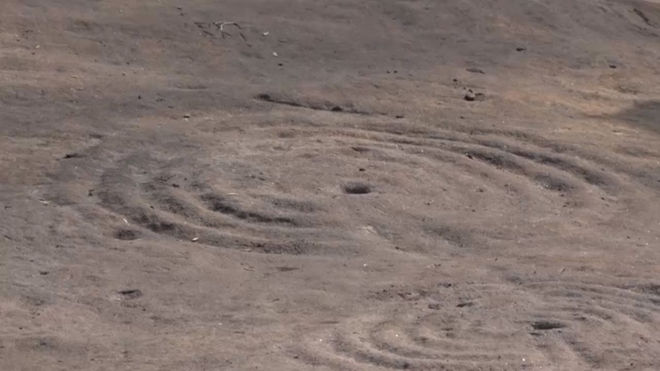“It is emotional when you have worked on a project such as this, touched it, walked on it and closely examined it, to then rebury it. But for now, that is what we have to do to protect it from the elements. Perhaps in the future, this site could be turned into a major tourist attraction in Scotland, with a visitor center — who knows?” – Kenny Brophy, archaeologist and senior lecturer at the University of Glasgow.

PHOTO: livescience.com
GLASGOW, SCOTLAND – the mystery of the famous Cochno Stone of Scotland is still baffling archaeologists and researchers, despite their best efforts to interpret it.
The Cochno Stone is a 5,000 year-old piece of ancient art that measures 43 feet by 26 feet. Etched into its surface are beautiful, swirling patterns, often referred to as “cup and ring marks”. It’s a popular prehistoric pattern that’s been found at sites all over the world. According to the University of Glasgow, the Cochno Stone is the best example of this style of artwork in Europe.
The stone is not a new discovery. In fact, it’s been known to locals in the area almost since the 19th century. It was first fully uncovered by Reverend James Harvey in 1887. In 1937, archaeologist Ludovic Maclellan Mann worked on the site. He painted lines on the stone to get a sense of the size of the artwork. His theory was that the lines were related somehow to eclipses or other astronomical phenomena.
He believed that the people who had created the artwork were attempting to predict, or at the very least simply record, movements of the sun and moon. However, his own data ended up disproving him.
The stone was left uncovered and unprotected by any authorities. By 1965, it had been horribly vandalized and disfigured. In an attempt to protect it, archaeologists reburied it beneath layers of soil where the stone has laid, invisible, until this past summer.
This past summer, a two week study was conducted on the stone. It was unburied, and a team of archaeologists excavated the site and used modern-day surveying and photography to record the artwork. They’re hoping that the huge amount of data they’ve managed to collect will aid other researchers in attempting to interpret these ancient lines. When they were finished, the archaeologists had to rebury the stone to protect it from trespassers.
The hope is that the area will get some governmental funding in the future, so the site can be protected and open for viewing by the general public. Until more information is known about the art, however, it will be difficult to successfully pitch for funds to build a protected area and visitors center.
The meaning of the Cochno Stone remains a mystery. For now, the decorative swirls lie safe from harm beneath several layers of soil. Only time will tell if the data collected by this year’s researchers will be of any use.

